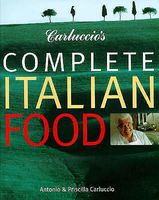Advertisement
Pane
Bread
By Antonio Carluccio and Priscilla Carluccio
Published 1997
The most common flour used for breadmaking in Italy is wheat, which is milled to make a very fine white flour. The flour is graded as 00 (doppio zero) and is also used to make, among other things, fresh egg pasta. Slightly less refined flour is graded 0, and so on until wholemeal flour, called integrate, containing the husk of the grain. It is, of course, well known that wholemeal flour is more nutritious and is a better source of roughage than white flour, but white flour and white bread are still more popular than the brown in Italy. In southern Italy, 00 (doppio zero) flour is mixed with durum wheat semolina to give the bread a much more solid consistency than the more delicate bread made in other parts of Italy. There are many other flours used to make bread, each of which gives a special quality to the finished product. Other flours used to make bread in Italy include rye, maize and cornflour, which is mixed with white flour for a more developed taste and more digestible bread.



